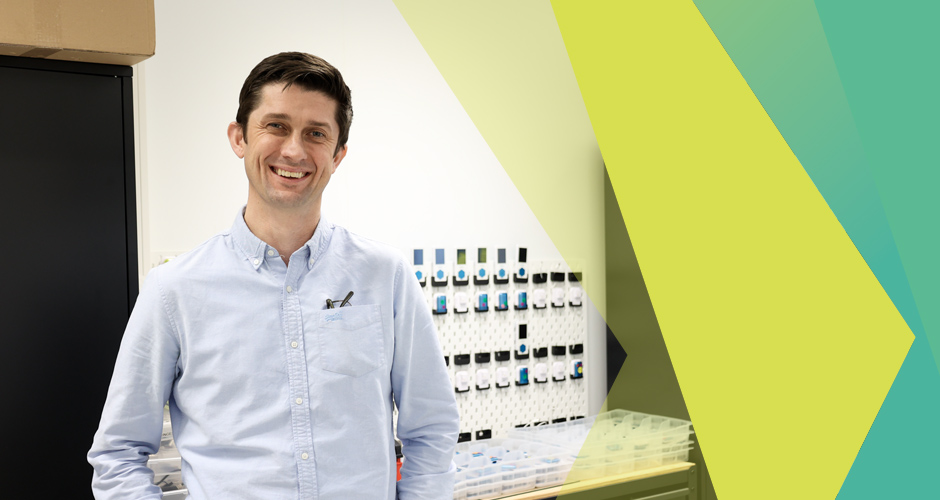Tim, as the co-founder of Kaleido, how did you come up with the idea?
Kaleido was born at a time when people living with diabetes had very few choices, and using an insulin pump was typically a conversation starter for all the wrong reasons.
We wanted to see if we could solve some of the challenges the available pumps presented, and we focused our attention on being small and precise in a package that didn’t look like a medical device. One thing we were also very conscious of was the fact that every person with diabetes is unique. We tried our best to make sure Kaleido could reflect and adapt to individual needs. Time and again we made choices that increased our effort, but we knew it was the right thing for our (hopefully) future customers!
It’s been 10 years since Kaleido was born and the team has grown to over 135 people of more than 30 nationalities! What makes you most proud of where we stand today?
I’m not really sure I feel “pride” as I still see we have so much more to do! While we started with just two of us, Kaleido very quickly became a runaway train, and over the years we’ve had many wonderful and talented people help shape Kaleido. It’s not pride, but I feel privileged that we get to do what we do for a job.
In medical devices there are a lot of strict guidelines for quality. How do you drive innovation in such a regulated environment?
Great question! Making an insulin pump is really hard and there are so many hoops we have to jump through, but we’ll never let that stifle our creativity and innovation. Crucial to meaningful innovation is to understand our customers’ pain points. I try to encourage the team not to ask our customers what they want, but instead what isn’t working for them.
We found early on with Kaleido that this approach yields some interesting results. Our short tubing is a great example – pump users told us that they wanted us to get rid of their tubing but when we understood the pain, removing the tubing completely wasn’t the right solution. With the right questioning we learnt that the perfect place to hide your pump isn’t always the same place you want your cannula. With Kaleido today, the short tubing removes the issues that come with conventional pump tubing but crucially, it keeps amazing flexibility with where and how you wear your pump.
Are there particular things you draw inspiration from?
People! In my work with Kaleido I have never been more impacted than the times where I have been sitting opposite a person living with diabetes – learning from their experience and trying to understand their unique needs. One encounter with a young girl will stay with me forever – we were testing some prototypes of the pump to get feedback on a few design details and when I put Kaleido on the table, both the girl and her mum went silent. For brief moment I was very confused, until the girl slowly and carefully pulled out her current insulin pump and placed it next to Kaleido. She then gently picked up Kaleido, turned to look her mum in the eyes and just whispered “wow”.
For balance, I can also share there was a time when a customer provided me with a multiple page report of everything I had gotten wrong, but positive or negative it has always been the experiences with people that has pushed me forward.
What would your advice be to anyone who has a great idea for a medical device?
Three things:
1. Don’t make a medical device, make a consumer product
2. Speak to your customers (and even hire some if you can!)
3. Go all in – there will be no turning back!
What’s yet to come for Kaleido?
The most exciting thing about my job is that we’re literally just getting started. I really wish I could show everyone what we’re working on and what ideas we have for the future but, of course, it’s top secret! What I can share is that we are putting our customers right at the heart of every decision we make. We are not the company who can cure diabetes but, until that time comes, we will be ruthless in our mission to reduce its impact.

